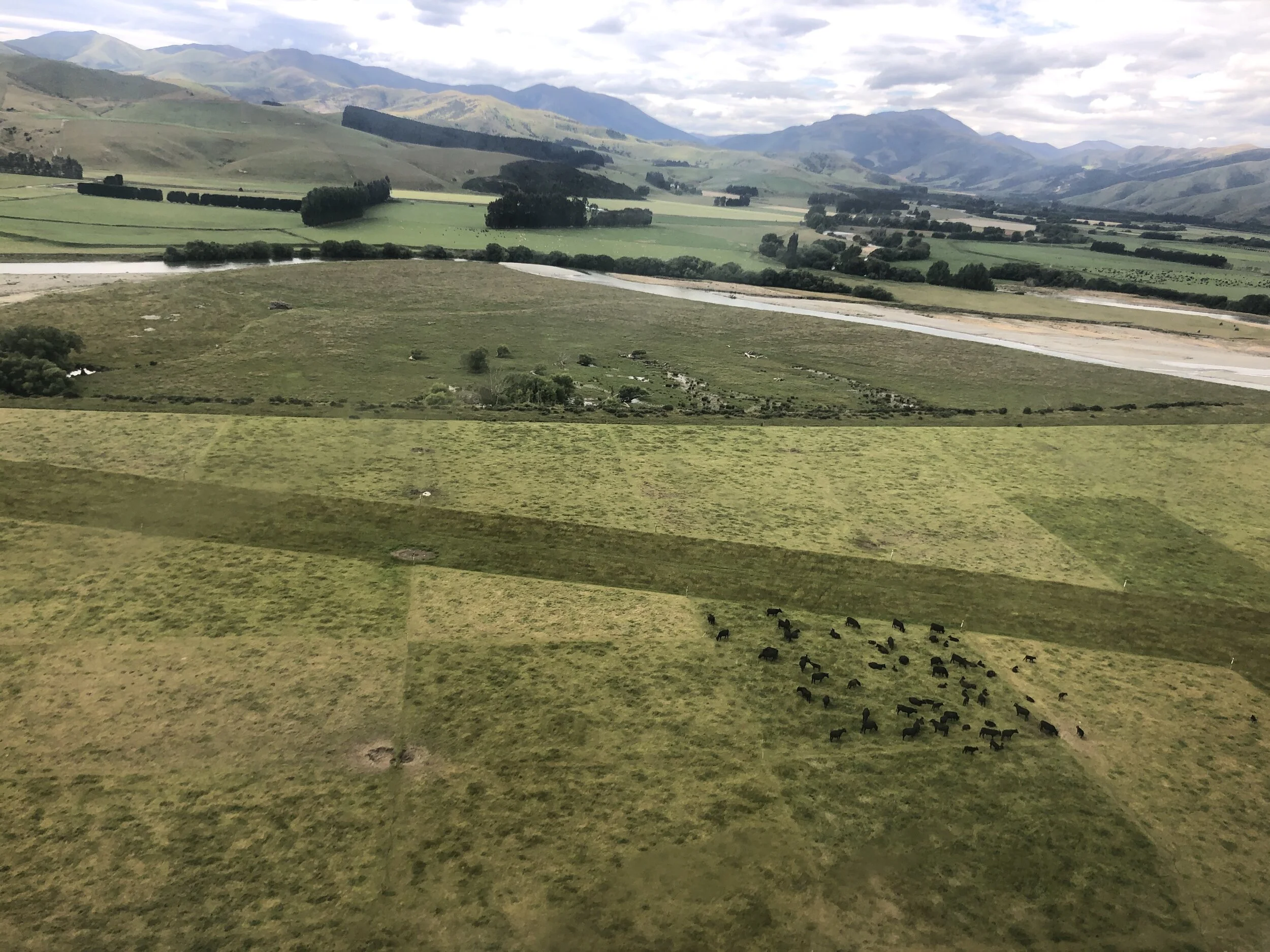Interview with Andrew Bowmar
Interview with Andrew Bowmar
Position: Dairy support & Beef Farmer
Property: Waikaia Plains
Date: January 13th, 2020
Over the past several weeks I have had the pleasure of diving into discussing all things food and farming with Andrew. Working and staying at Waikaia Plains in the Southland of New Zealand has been an incredible opportunity. I’ve learned a great deal about livestock management and have a new appreciation for the complexities of running a regenerative livestock operation. It is a lot more complex than just growing grass and putting the cows out to the paddock!
These interview notes are just scratching the surface of the hours of conversation that Andrew and I shared on topics ranging from regenerative agriculture to balancing profitability and soil health on his operation.
Tell me more about your farming operation.
Birds-eye view of the Kiwi-tech Techno fence system setup over Waikaia plains, creating 1/4 acre paddocks across the whole property.
We run a beef and dairy support operation with a couple thousand cattle. The farm has been in the family for a number of generations. We try to plan with a 400 year time frame in mind, so thinking beyond just the next 1-3 generations. Many of the decisions that we make on farm have a strong focus on empathy for the soil biome. We have been farming in an organic fashion for over 15 years but just recently got our organic certification, we do our best to mimic natural processes and farm in nature’s fashion. We run a Kiwi-tech techno fence system, that is a network of electric fences overlaid on the property to create ¼ acre paddocks. This allows us to easily shift our livestock 2-5 times a day. This frequent shifting of our cattle mimics the natural way that large herds used to migrate over the land, moving through a diverse environment trampling and eating as they go. So the fences play the role of predators in keeping the animals bunched together.
What is your definition of regenerative agriculture and what does that mean on your farm?
That's a difficult question because regenerative agriculture doesn’t have a clear definition, which I guess is both its strength and weakness. At its core I think it should be doing things in-line with nature and mimicking natural processes.
How do you define soil health? What does that mean on your farm?
We think about it as empathy for the soil biome, so in essence it’s making decisions that treat the land as a living entity.
Quantifying soil health is complex, and a developing science, but some of the practices that we use on our farm are:
Disturbing the soil as little as possible
Avoiding driving in our pastures with heavy vehicles
Planning the timing of grazing so that plants are fully recovered
Not spraying any synthetic chemicals or fertilizers on our farm
Tell me more about how you measure the environmental impact of your farm. Do you have a way of measuring carbon sequestration through your regenerative grazing practices?
Cattle are shifted 2-5 times a day by using electric bikes that can go through the Kiwi-Tech Techno Fence system and using poles called pogos that can lift of the electric wire. The cattle then move to the next cell. I like to think of the electric bikes as the “stock-animal” of the operation.
We are still trying to figure out the best way to quantitatively measure soil health and carbon sequestration. We believe it is important to look at both quantitative and qualitative factors when assessing soil health. Some of the more quantitative factors include:
Visual soil assessments, so looking at the soil texture, structure, color, smell, potential rooting depth and more. Additionally, we look at the overall pasture quality and assess the amount of weeds, pasture growth and clover nodules. Biodiversity of both flora and fauna is another key factor that we look at to measure the health of the farm.
On the whole, I think it is difficult to measure soil health and I don’t think it can be boiled down to numbers and charts. It is also about knowing how to visually assess the health of a pasture and building up the awareness to try to do the best by that pasture, which in turn does the best by the soil, the animals, livestock and so on.
What do you think the future of our agriculture and food system should look like?
I believe the relationship between farmers and consumers needs to be shorter and more ‘intimate.’ That is to say that the consumer should have a clear understanding of the principles and practices on the farm where their food is produced. This allows the extra cost and waste created by marketing to be minimized by allowing direct product placement. Consumers should ultimately decide how they wish their food to be farmed.
I think it is important that we stop thinking in terms of right and wrong. When talking about how agriculture should be done I don’t think the discussion should be about better or worse. We should also be empowering the consumer to be a significant decision maker in their entire food production system, while accepting that it, (food) means different things for different people.
There isn’t a one size fits all solution to our agriculture system. On our farm, we try to live by the principle that you can’t change the world, you can only change yourself. So we try to farm in a way that is most in-line with what we believe, but we’re also very aware that it is only our view.




